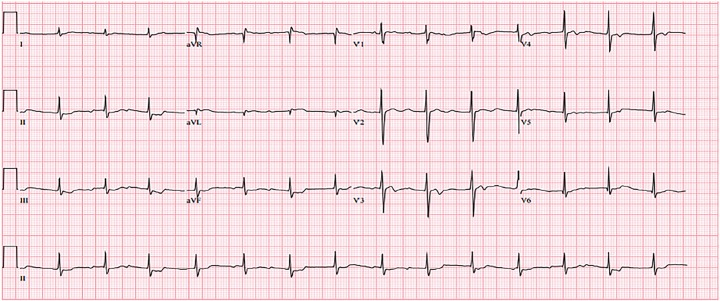Level 1 pediatric trauma patients are usually an infrequent occurrence, but they are severe and it is important to be prepared for them. Pediatric patients are also more complicated almost all the equipment, medications, and even vital signs parameters are different depending on the age/weight/height of the patient. This makes evaluating and managing a pediatric patient more complex and nuanced.
The Broselow Cart is designed to have the proper equipment by weight range, but can also be used in conjunction with the broselow tape if a weight cannot be obtained.
Let's set the scene, we get a notification that they're bringing in a 6 month old, unresponsive, 5 minutes out.
To set up the resus room for this patient, we check that there is an appropriate infant BVM on the Broselow cart, place the backboard on the bed along with the Broselow tape, and crack open the cart.
When you open the drawers of the Broselow cart, it may be overwhelming if you have never seen the contents before. The first drawer is medications that are commonly used in pediatric resuscitations.
Be aware that both the cardiac arrest epi and the anaphylaxis epi are in here, the beige tan colored box has the cardiac arrest epi which is lower concentration higher volume as the medication is given IV, while the white box with the pink star has the anaphylaxis epi which is a higher concentration and lower volume as the medication is given IM.
Next you open the bottom drawer and take note that the laryngoscope handles and McGill Forceps are in here.
Just as you open the pink/red drawer, the patient rolls in with EMS:
6 month old female who just started eating solids, had eggs and peanuts for the 2nd time in her life today. Parent states that the patient had 1 episode of vomiting and thought the patient just ate too much and let the patient rest in the crib. Reports that after completing chores, they went to check on the patient 30 minutes later and noticed her face and body was red, swollen, and she was having difficulty breathing so EMS was called. Upon EMS arrival, patient was given 0.01mg/kg IM epinephrine, about 10 minutes ago.
Upon arrival in the ED, patient appears lethargic, swollen face, wheezing throughout.
Vitals: HR 190bpm, RR 60, BP 60/30, O2 sat 80% on NRB.
While a nurse is attempting to get an IV, you tell another nurse to give the patient another dose of 0.01mg/kg epi, get a second IV and administer IV fluids (20mL/kg or 140mL of normal saline), ask pharmacist to prepare 0.1mcg/kg/min epinephrine drip, and prepare for intubation anticipating a difficult airway, call anesthesia. Ask RT to bag the patient with the infant BVM.
You turn around to collect your supplies and the pink/red drawer looks like this:
Most of the airway equipment is on the left section with the ETTs being stored in the middle. If multiple people are using this cart, it will likely not be organized so just knowing what is in the drawer itself is the most important.
For this patient I would grab an OPA, PEEP valve, the small hyper-angulated rigid stylet and the LoPro S1 blade from the left side of the drawer, and under the BP cuffs to get the 3.5mm uncuffed ETT. As a backup, I will get the 6Fr stylet as well as the miller blade and a blade handle for the most bottom drawer. Also, be sure to check that the suction on the wall is working and get the small Yankauer catheter hooked up. Find the makeshift needle cricothyrotomy kit which includes a 14G angiocath, a 3mL syringe, and adapter to 7.0mm ETT.
Next, ask the nurse to draw up ketamine 1.5mg/kg or 10.5mg, use the infant BVM with the PEEP valve to bag the patient, get a repeat set of vitals, and attempt to intubate the patient.
We never know what may be rolling through those doors, so it is important to be ready for anything and everything.
For this Trauma Tuesday we will go through a pediatric trauma case based on a case that I was a part of 2+ years ago while also reviewing some trauma reminders and the rest of the Broselow Cart!
6 y/o male brought in to resus 51 as a level 1 trauma, intubated after being rolled over by a car that reversed onto the sidewalk while the patient was crouched down and playing next to the curb. EMS reports that patient was hypoxic and unresponsive, intubated, vitals improved.
Upon arrival in the ED, trauma team and peds ED team at bedside.
Vitals: HR 135bpm, RR bagged at 18, BP 100/60, O2 sat 93% bagged
Airway - intubated, Breathing - bilateral breath sounds, Circulatory - distal pulses intact, tachycardic.
e-FAST negative, Primary survey - large right sided chest wall contusion and ecchymosis, Secondary survey - large ecchymosis on the right upper back.
CXR with large right hemothorax, PXR negative, patient was taken to CT scanner and found with large right hemothorax before going to Peds 31.
Patient's O2 saturation dropping from 93% to 85%, thought it was due to hemothorax, and a right sided chest tube was placed.
Pause:
One of the things that we should've done is open the Broselow cart prior to when the patient initially arrived in Resus 51, I think we estimated his weight to be 20kg by the Broselow tape but did not open the cart since the patient was already intubated. Even though it was not used in this case, we should get in the practice of opening the cart whenever a pediatric resus patient arrives.
One of the barriers to opening the cart is not knowing what is in the cart, so the POTD from yesterday gave an overview, and here are the rest of the drawers. Everything contained in each drawer is the same, just different sizes for the different estimated weights of the patient according to the Broselow tape.
In addition, all pediatric trauma patients need a trauma observation order, a recorded weight, and height, so there is a new tall block in peds resus 30 with a tape measure attached to measure our patient's height:
Here is the rest of the Broselow Cart:
This patient got a 24Fr Chest tube in the right chest with about 200cc of output, but the O2 saturation was not improving and patient desaturated to the low 80s. A CXR was obtained to confirm chest tube placement but it also revealed that the ETT tube was too high.
Upon review of the first CXR, it seems that the ETT tube still seemed slightly high but probably was in place and got dislodged as the patient was moved multiple times now. The peds attending and senior EM resident utilized video laryngoscopy and found the balloon above the cords. The patient started to desaturate to the 70s, the dislodged ETT was removed and they bagged the patient. Patient's O2 saturation improved to high 80s/low 90s and they reintubated the patient. After intubation, the patient's right chest tube put out another 200cc of blood and continuing, so the decision was made to take the patient to the OR and given MTP. In the OR, the patient arrested while they were performing a thoracotomy but they were unable to achieve ROSC.
Patient had a bronchial injury causing the large hemothorax and even with MTP and making it to the OR the patient died. It was a reminder that pediatric patients are able to compensate for the most part until they are not. It is a constant reminder that we have to stay vigilant and be prepared. We check the resus bays and review airway plans every shift in order to get ahead of it. Now let's keep the Broselow cart in mind for pediatric resuscitations!
Takeaways:
Every pediatric trauma patient needs a recorded height, weight, and a trauma observation order.
Open the Broselow cart before the patient arrives to review your equipment.
Crack open the Broselow cart for any pediatric resuscitations!






















